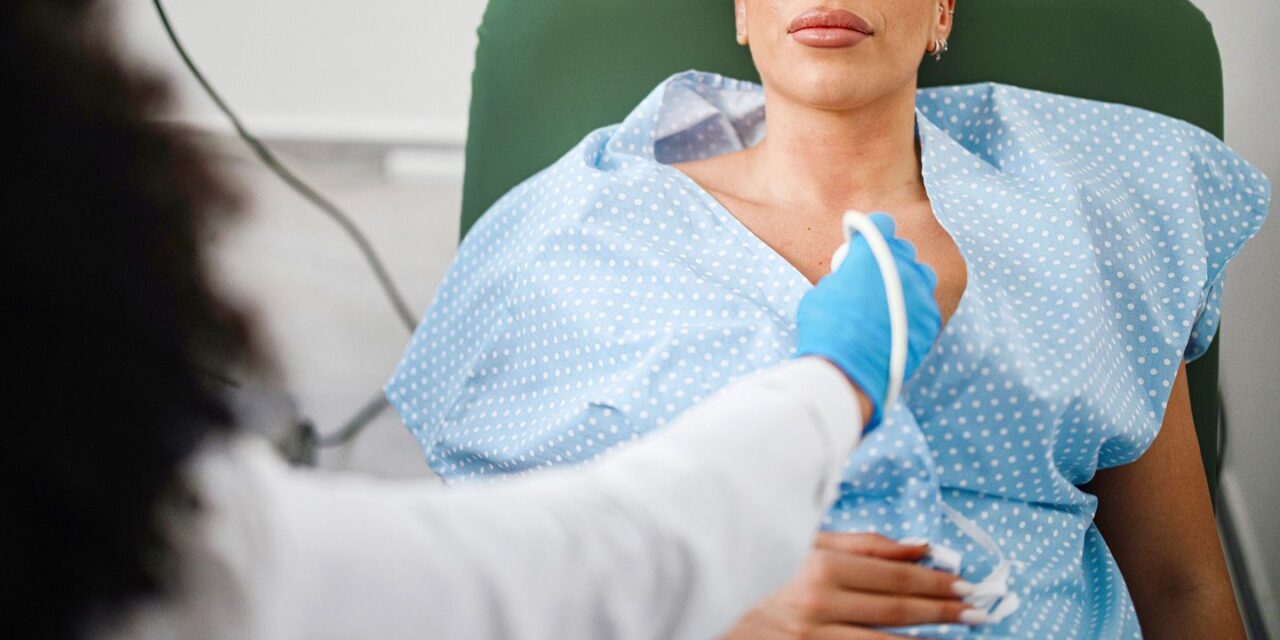
Breast cancer may be associated with the color pink and the term “women’s health,” but people of any gender can get it, including transgender men, transgender women, cisgender men, and nonbinary people. Screening in the transgender population has unique needs so it’s important for health providers and patients alike to know when it’s needed or how to go about screening, especially in a way that is comfortable for the patient.
“The incidence of breast cancer in individuals assigned female at birth and taking testosterone, and folks who are assigned male at birth taking estrogen are pretty similar and incidence of both are much, much lower when compared with the incidence of breast cancer in cisgender females,” says Julie Thompson, a certified physician’s assistant and medical director of Trans Health at Fenway Health in Boston.
Early studies show that rates of chest cancer in transgender men are similar to men assigned male at birth. A Dutch study published in 2019 in BMJ showed that both trans women and trans men had lower rates of breast cancer than cisgender women. While trans women’s risk of breast cancer increased as they took estrogen hormone therapy and grew breast tissue, it remained lower than women assigned female at birth.
When Should You Get Screened?
In its most recent draft statement, the U.S. Preventive Services Task Force (USPSTF) recommends that all women get screened for breast cancer every other year after age 40. Anyone assigned female at birth who hasn’t had reconstructive chest surgery would follow that recommendation, according to Thompson. But the new recommendations are still a topic of debate among oncologists. Based on the National Comprehensive Cancer Network, American College of Radiology, American College of Obstetrics and Gynecology, and American College of Surgeons, the recommendation is getting a mammogram screening annually.
According to the American College of Radiology, mammograms may be appropriate for trans women “with five or more years of hormone use” if they are average-risk and 40 years of age or older or if they have higher than average risk and 25 to 30 years old.
For transgender and nonbinary people who have had breast tissue removed in chest reconstruction surgery, some breast tissue will remain depending on the type of surgery — tissue that is still susceptible to cancer but is harder to screen. For patients that have had this procedure, typically trans men, it is recommended that they have chest exams performed.
“If someone’s had chest reconstruction surgery, typically doing a mammogram is not possible,” Thompson says. “There’s just not enough chest tissue available to do that screening. And actually, right now, there’s no reliable evidence-based screening for those individuals.” She says it’s important that people who have had top surgery — surgery that removes or adds breast tissue and reshapes the chest to create a more masculine or feminine appearance — talk to their doctors about family history of breast cancer and that they always alert their doctor if they feel any lumps.
The American College of Radiology says that “no test is appropriate” for preventive screening for trans people who have had a double mastectomy, or top surgery. For trans people who have had breast reductions or no top surgery and are at average-risk for breast cancer, they recommend mammograms for those 40 years or older.
People at higher risk for breast cancer include those who have a family history of breast cancer, obesity, and never having been pregnant (for those assigned female at birth), per Mayo Clinic. Research shows high body weight can increase not only the risk of getting certain subtypes of breast cancer but also a higher chance of recurrence and mortality. Studies have also shown that many factors surrounding pregnancy and chestfeeding affect breast cancer rates, with risk rising for those who give birth for the first time when they are over the age of 30 and temporarily for those who have given birth within the last 10 years.
“What we are concerned about is that trans women may not realize they need to get screening for breast cancer if they have been on hormones and that trans men may not realize that top surgery is not the same as mastectomy, says Scout, executive director of the National LGBT Cancer Network. “We also know that it’s really hard for trans men who haven’t had top surgery to get screened for a body part they don’t think they have.”
Managing Gender Dysphoria
A breast or chest cancer screening can be triggering for gender dysphoria for a transgender person and Scout says that self-care is important when going to an appointment like a mammogram.
“This will vary for each different person, but what I think is important to know for all of us is you’re not just going to a doctor’s appointment, you’re doing something that is going to be triggering and traumatic, and you should treat yourself with all the care that you would like if someone yelled something mean to you on the street,” explains Scout.
That could mean spending time with supportive friends, going for a long walk in the woods, or “whatever it is you do to be gentle and restorative and celebrate your smart healthy choices.”
Transgender-affirming providers can help make the experience less dysphoric. The Transgender Legal Defense and Education Fund’s Trans Health Project lists multiple directories of trans-competent healthcare providers.
“We have done so much to survive in a hostile world,” Scout says. “I would really encourage all of us to go for the big wins by taking care of our life, our health, and ourselves for the long-term. Why? Because we’re really needed here. And we fight too hard to stay alive on a daily basis to miss some of the big things that can keep us here longer, like cancer screenings.”





